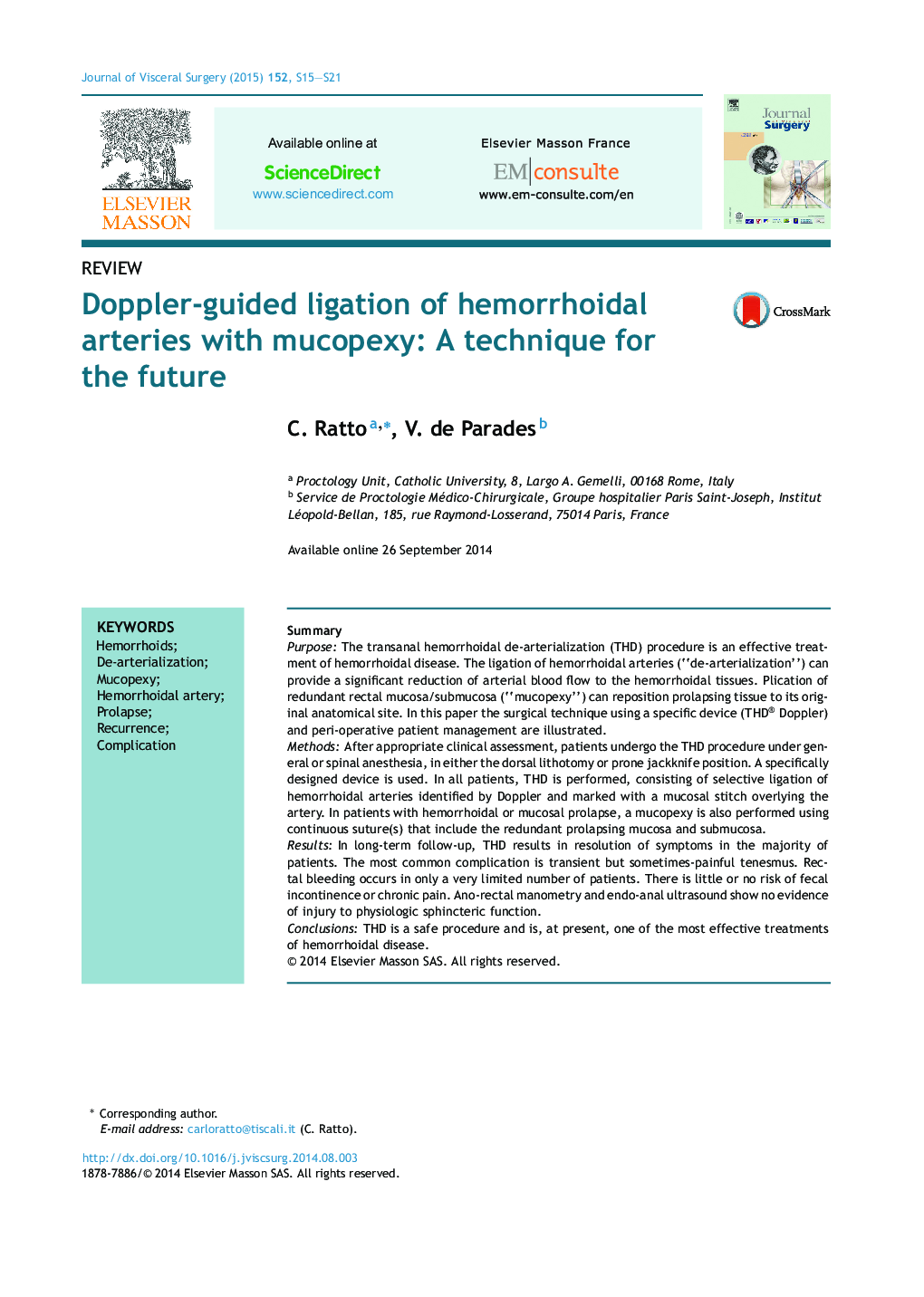| کد مقاله | کد نشریه | سال انتشار | مقاله انگلیسی | نسخه تمام متن |
|---|---|---|---|---|
| 3315767 | 1211486 | 2015 | 7 صفحه PDF | دانلود رایگان |
SummaryPurposeThe transanal hemorrhoidal de-arterialization (THD) procedure is an effective treatment of hemorrhoidal disease. The ligation of hemorrhoidal arteries (“de-arterialization”) can provide a significant reduction of arterial blood flow to the hemorrhoidal tissues. Plication of redundant rectal mucosa/submucosa (“mucopexy”) can reposition prolapsing tissue to its original anatomical site. In this paper the surgical technique using a specific device (THD® Doppler) and peri-operative patient management are illustrated.MethodsAfter appropriate clinical assessment, patients undergo the THD procedure under general or spinal anesthesia, in either the dorsal lithotomy or prone jackknife position. A specifically designed device is used. In all patients, THD is performed, consisting of selective ligation of hemorrhoidal arteries identified by Doppler and marked with a mucosal stitch overlying the artery. In patients with hemorrhoidal or mucosal prolapse, a mucopexy is also performed using continuous suture(s) that include the redundant prolapsing mucosa and submucosa.ResultsIn long-term follow-up, THD results in resolution of symptoms in the majority of patients. The most common complication is transient but sometimes-painful tenesmus. Rectal bleeding occurs in only a very limited number of patients. There is little or no risk of fecal incontinence or chronic pain. Ano-rectal manometry and endo-anal ultrasound show no evidence of injury to physiologic sphincteric function.ConclusionsTHD is a safe procedure and is, at present, one of the most effective treatments of hemorrhoidal disease.
Journal: Journal of Visceral Surgery - Volume 152, Issue 2, Supplement, April 2015, Pages S15–S21
